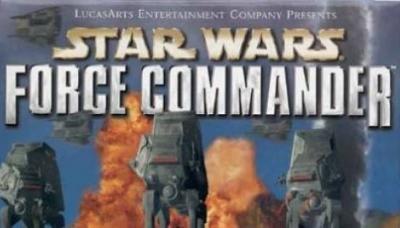Star Wars: Force Commander (0)

Overview
Force Commander was LucasArts first foray into the real-time strategy genre. It was originally conceived as a 2-D RTS, along the same lines as the successful Command & Conquer and Warcraft series'. Several risky design choices were made, including the re-engineering of the entire game in order to attempt to take advantage of the latest 3-D technology.
Plot
Force Commander begins during Episode IV in the Star Wars timeline as the Empire is attempting to track down R2 D2 and C-3PO on Tatooine. From there, it runs parallel to the plot of the classic trilogy, occasionally intersecting with key events over the course of the 24 mission campaign. Throughout, you will follow the story of Bren Tantor, a young Imperial with aspirations of becoming an elite stormtrooper. As his career progresses, he makes a discovery that will cause him to question his choices and allegiances.
Graphics
The original conception of Force Commander was as a 2-D RTS, and the few screenshots that were released had a clean, if not generic look about them, comparable to other games of it's era. When the game was finally revealed with it's new 3-D engine, much of the unit detail and character of the environment seemed to have been lost. The graphics seemed to suffer because of the choice to make the camera move 360 degrees and many of the units had a grainy, squarish look to them, especially when the camera was zoomed in. In addition, the environments featured shaped terrain, but used very low resolution texture and offered little in the way of foliage or other details to fill out the maps.
Audio
While most of the stock sounds of lasers and TIE Fighters make an appearance in Force Commander, one area of debate and controversy was the musical score. Rather than dropping the standard issue John Williams soundtrack in and being done with it, the score was modified to give it a harder, heavy metal feel. The addition of electric guitars and aural other elements are hotly contested amongst fans of the series.
Gameplay
From a control standpoint, Force Commander closely resembles other RTS games of it's era. Units can be controlled individually or in groups. Players can group units of similar types, or lasso all of the on-screen units until the group is at capacity. In addition, units were capable of secondary attacks to round out their abilities.
An area that LucasArts strayed from in comparison to other RTS games was in resource management. Rather than the gathering process that dominated the genre, a Command Point system rewarded players for controlling bunkers on the map, in addition to destroying opposing units and structures.


